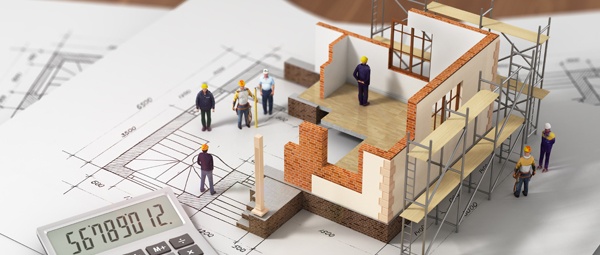How to fund property development
When it comes to funding property development projects, there are several options available. But some find so much choice overwhelming – especially when they’re unfamiliar with the more ‘complex’ solutions.

To set the scene, take the experienced SME property developer seeking finance to kick-start their next project. They approach the High Street and private banks with their detailed proposal – but after a short conversation, they’re turned away.
This is a common occurrence for smaller developers who simply don’t have the established relationship, sufficient equity or want to do projects outside the South East of England.
The next obvious choice is to approach alternative lenders. But, the specialist lending market can appear daunting for someone who hasn’t used it before.
With a more made-to-measure approach than the High Street, specialist finance lenders can offer specialist products with greater flexibility for the borrower – which can be extremely useful when funding a construction project. But these benefits are often perceived to be outweighed by the complexity of the products available.
However, there are many property developers succeeding with their projects using alternative lenders. So, what products do they tend to use when kickstarting a project? Let’s take a look and make it simple, beginning with development finance.
Property development finance

Does exactly what it says on the tin. Property development finance is often used by experienced property developers for anything from renovating a single residential unit to constructing new build residential developments.
As it is designed to work around development projects, unlike traditional funding, development finance offers a bigger portion of build costs in advance. Also unlike many other types of finance, the loan can be taken in stages - drawn-down in tranches as the project progresses. 
The approach lenders take varies, as they all assess factors such as the strength of the project, build type, valuations, developer history, borrower circumstance, security and rates differently.
Still, it doesn’t have to be too complicated to get started with. Here are some of the key things to understand about development finance:
· Minimum loan sizes
Depending on the lender, funding can start anywhere from £50,000 to £2.5m, the bigger lenders such as the High Street banks, are known to only consider funding for bigger value projects. Which is why development finance is ideal for those with smaller projects.
· Loan to Gross Development Value
The Gross Development Value (GDV) – or end value, is a valuation metric which is calculated to give an idea of what the project could be worth on the open market after the development works have been completed. For obvious reasons this is one of the most important metrics to consider for developers and investors. The standard for lenders tends to be between 60-65% of GDV.
· Loan to Cost
Put simply this is the cost - or amount of the loan - required to build the project. Many lenders offer finance up to 80% of a project, but the higher the ratio the higher the risk – so borrowers should expect higher interest rates.
· Terms
Expect most lenders to offer terms between 12 – 24 months.
· Experience
Whether you’re a sole trader, a Ltd company or LLP – experience tends to be important to lenders. Many lenders will likely want to see experience with similar projects, as this is will give them greater confidence that the project will succeed. So, do be prepared to demonstrate the success of previous projects and the experience of your team to show it can happen just as well, again.
Second Charge mortgages

Second Charge mortgages, otherwise known as secured loans, enable homeowners to borrow money from a lender using existing equity in their property. In terms of convenience for property developers, Second Charges:
- Offer an alternative to remortgaging to free-up funds
- Offer flexible funding uses, which is ideal for development projects
- Are known for being extremely fast from application to funds received, which is useful if you have run out of money during a project
- Don’t usually require you to be living in the property to take out the Second Charge
- Lenders have more relaxed criteria, facilitating lending for more diverse borrowers, including self-employed
Bridging loans

You may be familiar with bridging loans, but less so for their uses and how a property developer may be able to take advantage of them.
If you’re not aware of bridging loans, they are short-term interest-only loans which are often used by borrowers in need of immediate access to funds. One of the key benefits of bridging loans for property developers is that they’re fast – giving you the opportunity to secure a deal before someone else.
Here are some ways a property developer could use a bridging loan:
- To purchase a property which High Street lenders won’t consider.
Unlike traditional finance, bridging finance can be secured on any property including houses, flats, commercial units, land with planning, uninhabitable and unmortgageable properties. - To secure planning permission
Bridging loans can provide the quick access to capital needed to purchase a site while applying for planning consent. - Bridge a funding gap when buying or renovating a property
You’ve made an offer on a property or your project has a tight turnaround that you can’t delay. Bridging is an ideal solution to seizing opportunities, quickly. - Refurbishment work
Bridging loans can be used to purchase uninhabitable properties, which is even more ideal for developers buying properties at auctions. - Temporary solution while waiting High Street mortgage application to be completed
Bridging loans can take only a few weeks (or sometimes just days), whereas High Street mortgages can take months. - Fix a broken property chain
Even developers get caught up in broken property chains. Bridging loans enable a seller of one property to secure their new property before the sale of their existing property goes through.
With years of experience providing property professionals with much needed funding for projects – we understand your challenges. We hope this overview of how to fund property development projects has given you a clearer understanding of how to get started.
Here at West One Loans, we’re already providing funds for renovations and conversion work through bridging, Second Charge and development finance, and are well-placed to support SME property developers for projects deemed too small by High Street lenders.
Find out more about West One’s development finance range and browse our small business guide to property finance:
